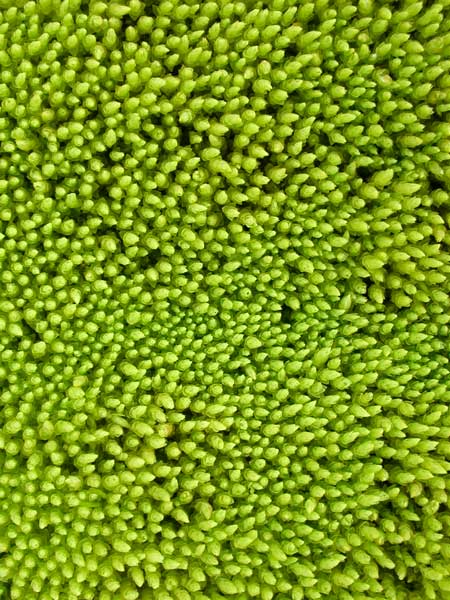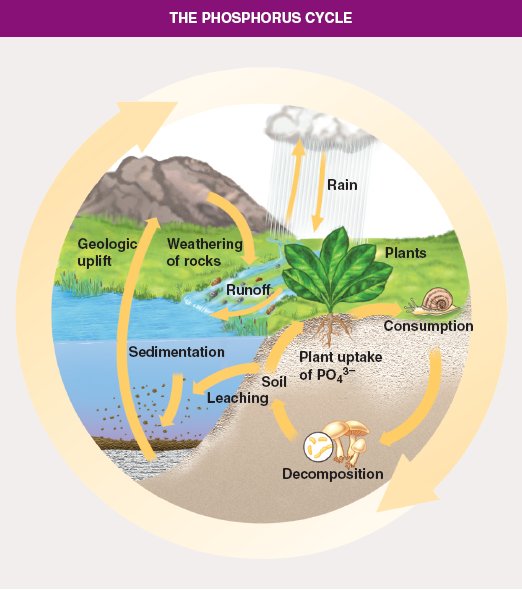Kingdom Plantae : Plant Kingdom
Taxonomy | Illustrated Key | Dichotomous Key | Biology | Division Traits
Kingdom Plantae Taxonomy |
Scientific Name:Kingdom:Plantae Divisions:
Families: 90 (approx.) Genera: 250 (approx.) Species: 800 (approx.) English Name(s):Plant Kingdom, plants, flora, vegitation Gwich'in Name: |
Illustrated Key To Plant Kingdom | ||
|
Note: Move cursor over image for note on what to look for. Click on image to enlarge.
|
Dicotomous Key To Plant Kingdom |
|
A: Plants with no true vascular system: Bryophyta A: Plants with well developed vascular system: Tracheaophyta
|
Biology of Plant Kingdom |
Natural History I: The story of the origins of the first plantsThe Earth formed 4.6BYA (Billion Years Ago). Simple organic molecules began forming soon after. There are 2 theories of how simple organic molocules were to be found on earth before life began. One idea states that they were of cosmic origin comeing in on meteors and comets. Meteors from present day are known to have some simple organic molocules in them. The other theory is that they were formed on earth in a variety of methods and environments that are known to have existed and known to be able to produce simple organic molocules. Oceans formed by 4.4BYA and shallow tidal pools would have been an important environment for the collection and concentration of simple organic molocules. The cycles of heating and cooling as well as wetting and drying would have made good conditions for the forming of complex organic molocules form the simple ones. Some of these complex organic molocules such as some protiens and some lipids naturally form into spheres that can grow by absorbing other like molocules. Once they reach a critical size thier chemimistry dictates they divide onto 2 spheres. RNA molocules would also have developed in these tidal pools. They have the ability to loosely bind to amino acids which then bind strongly to eachother forming protiens. During the periodic drying of these pools some RNA would have gotten caught in the protien spheres. As well some protien and lipid spheres would have joined creating a shpere with a semipermiable protien lipid membrane like that of living cells. With the right combination of protiens lipids and RNA some of these spheres would have found themselves able to build the right protiens to grow and divide. Those that did so best would have become more numerous and so began the process of Darwinian evolution. The simplest cells today are the Prokaryotic cells which lack any internal organells but are vastly more complex than the simple self replicating molocules described. It would take 100s of millions of years for the self replicating spheres to develope into fully living cells which did not appear before 4.1 BYA. These early cells developed different ways of feeding themselves. Some developed chemosynthesis, others ate other cells. Some developed pigments that would protect them from the the intense radiation of the early sun. Some of these pigments could absorb the suns energy and use that energy to chemically produce nutrients. Sometimes cell membranes would have folded into the cell inclosing certain parts of the cells inards, such as the nucleus and some organells. If this was benificial that cell would be more succesful. As well some cells would be absorbed by larger cells. If this was benificial to both cells they would live symbiotically. This happened when aerobic (oxygen useing) cells were absorbed by other cells. Over generations they became more dependant on eachother untill the aerobic cell became an organelle called mitochondria. The infolding of the outer membran to create inner membranes and the absorbtion of mitochondria led to the formation of the first eukaryotic cells. Eukaryotic cells are much larger and more advanced than prokaryotic cells and are the cells of all multicellular organisms. Some of these early Eukaryotes would have absorbed photosynthesysing prokaryotes. Over time these prokaryotes would become the chloroplasts of the first algaes which appeared about 2.1 BYA. One line of algae developed cellulose cell walls, starch as a food compound and chloroplasts with chlorophyl vertually identical to that of modern plants. These algaes are the Green Algaes. Multicellular organisms developed independantly numerious times in the evolution of life. Cells form colonys where individual cells find benifit living loosely atached to eachother. Some develop the ability to join together in chains or spheres. Over more time some joined cells become specialized such as the anchor cell that holds the chain to the ground, or the cells that undergo meiosis creating male and female gamites. By about 800MYA (Million Years Ago) this trend of specialization leads to distinct tissues and organs and complex multicelular organisms. Mutlicellular green algae developed a lifecycle that would be inherited by all plants called the "Alternation of Generations" (See Biology section below). One certain line of multicellular green algae called the Charophytes(Stonewarts) are the clossest living relatives to the plant kingdom. Thier mode of reproduction is more complex than the other green algae but not as developed as the plants. They have multicellular antheridia (male reproductive parts) like plants. There reproductive mode is oogamous meaning that the male gamite (sperm) are small and mobile, and swim to the much larger immoble female gamite (egg). This is the same as the spore bearing members of the plant kingdom. However unlike members of the plant kingdom, the zygote (fertilized egg) developes independently of the female reproductive parts of the gametophyte. This is an important distinction as members of the plant kingdom are defined as embriophytes. In embriophytes the zygote (sporphyte) develops an embrio within the gametophyte archegonium (female reporductive parts). A link between the Charophytes and the plant kingdom called Parke decipiens which had more complex reproductive organs, lived between 415 and 395 MYA. By 400MYA there were numerous primitive embriophyte plants species. Did they have one common ancestor? Or did more than one species of Charophytes develop into plants? Also not known for sure is if the Bryophytes (nonvascular plants) represent a different line of evolution from the Charophytes than that of the Tracheophytes (vascular plants). Natural History II: The story of the evolution of the Plant KingdomIt is not known for sure if tracheophytes (vascular plants) evolved from the ancestors of the bryophytes (non-vascular plants) or if the bryophytes represent a different lineage completely making the plant kingdom polyphyletic (decended from more than one ansestor). However it is known that the tracheophyes would have had to evolve from non-vascular thus bryophyte like ancestors. Most scientists are now agreeing that tracheophytes probably did evolve from an ancesteral bryophyte. Liverworts were most likely the first true plants (embriophytes) emerging as early as 470-430 MYA. Not long after thier emergence the ancestors of the mosses would have branched off. The Liverworts, Mosses and Hornworts (of which we have none in Yukon) make the Bryophyte Division(non-vascular division) of the plant kingdom. To learn more about the non-vascular plants click here: The Bryophytes Some plants started develping water and nutrient conducting tissues. Plants with a vascular system are able to grow larger and taller than those with out. From the moss branch the tracheophyes (vascular plants) would have separated by 408 MYA. Over time competition for sunlight would cause the vascular systems to become more refined so that by 540 MYA plants would grow to the size of trees. To learn more about the vascular plants click here: The Tracheophytes It is said that the evolution of seeds was the single most important develpment in the history of plants. A number of lineages evolved to reproduce by seeds however only one group of seed plants became the ancestors of all todays seed plants. The first seed plants were gymnosperms (naked seed plants) and appeared about 360 MYA. The first conifers which all Yukon gymnosperms are, appeared 310 MYA. Today conifers cover 25% of the earth surface. Over time the seed plants became more sophisticated. They started to protect thier seeds in an ovary and they started to produce flowers to attract insects for firtilization. The fist angiosperms (flowering seed plants) appeared only 130 MYA but now account for 96% of all vascular plant species.To learn more about the seed plants click here: The Spermatophytes The Plant Cell
There are a few features that make plant cells unique from the cells of other organisms. Plant cells have thick rigid cell walls. These walls are made mostly from fibers of cellulose. Having cell walls protects the individual cells and gives the whole organism rigidity and strength. In multicellular organisms cells need to function in coordination with each other. To do this plant cells have cytoplasm channels going through the cell walls and connecting neighbouring cells. These channels act as a circulation and communication system. Through these channels cells can exchange water, nutrients and chemical messengers. Plant cells also have organelles called chloroplasts. The chloroplasts contain chlorophyll molecules which are able to harness the suns energy. They are the location of photosynthesis in plants. See Photosynthesis in Ecology section below. Life Cycle: Alternation of GenerationsPlants along with the higher algaes have a life cycle characterized by alternating phases called generations. It is hard to imagine that small spore producing liverworts and large seed producing trees would have similar life cycles but they do. The two phases or generations are called the sporophyte and the gametophyte. We will will start with the sporophyte which is what we ussuallty recognize as a plant. The sporophyte has the full genetic code of the plant. The mature sporophyte has special cells called sporocytes which go through a special type of cell division called meiosis. In meiosis the children cells have only half the genetic code of the parent cell. These cells make up the spores. When the spore is shed from the sporophyte plant some will start to grow into the next phase or generation called the gametophyte. The gemetophyte has only half the genetic code of the plant. On maturity, the gametophyte produces male gamites called microspores and/or female gamites called megaspores. In humans this would be the equivilent of male sperm cells and female egg cells. The microspore (male sperm) travels to the megaspore (female egg) which is in the megasporanguim (megaspore producing organ). Firtilization occurs by the joining of the gamites, creating a sporophyte zygote with the full genetic code of the plant. The zygote grows from the megasporangium of the gametophyte. Upon maturity the sporophyte will produce spores, starting the cycle again Plant GrowthPlants continue to grow for as long as they live. This is in contrast to animals witch stop growing after a certain size or age. It is said that while animals move through thier environment and plants grow through thier environment. This does not mean plants are immortal. Most plants have a finite life span. Annuals are plants that will complete thier entire life cycle (germination, growth, reproduction, death) in one season or one year. Biennials are plants that will complete thier life cycle in two years. Ussually focussing on vegitative growth the first year, ofteb storing nutrients in their roots over winter, then useing this nutirent supply to concentrate on reproduction the second year. Perennials are plants live for three or more years. Some perennials will produce reproductive parts the first year and will continue to do so for a number of years. Other perennials will take many years of growth before they start reproducing for 1 to many years. |









